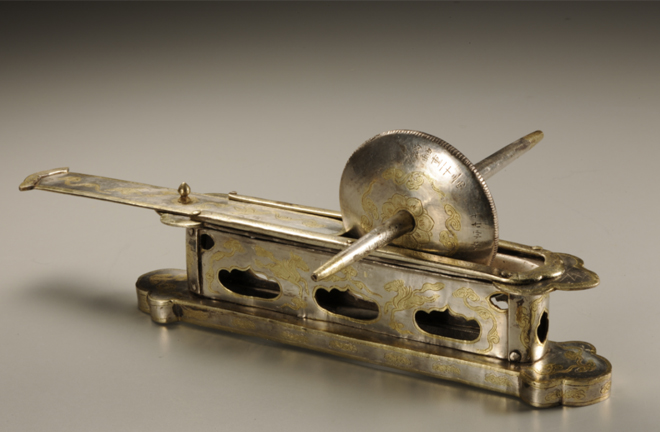Tea tradition in China

FILE PHOTO: A Tang Dynasty silver tea grinding set unearthed at the underground palace of Famen Temple in Shaanxi Province
Tea has held a cherished place in Chinese culture for millennia. Historical records suggest that as early as the Western Han Dynasty, tea was already an important commodity. After the Six Dynasties, the practice of tea drinking gained popularity in southern China, as more and more individuals gradually embraced the habit.
The establishment of a unified empire during the Tang Dynasty enabled frequent economic and cultural exchanges between the north and south, laying the foundation for the further spread of tea-drinking traditions. By the mid-Tang period, tea-related activities reached an unprecedented scale. Scholars and artists of the time formed a deep bond with tea, not only producing tea-themed poems and paintings, but also socializing around it, hosting tea banquets, building tea rooms, and engaging in other activities that collectively fostered the vibrant tea culture of Tang society.
In terms of tea preparation, the Tang saw the rise of the “jian cha” method, in which tea cakes (compressed tea) were ground into powder and boiled to create the beverage. The Tang text Classic of Tea formalized the tea-drinking process, integrating aesthetic principles and elevating tea drinking to an art form.
By the Song Dynasty, tea had become an indispensable part of daily life. Song tea traditions underwent significant changes, with the tea preparation method evolving into the more refined “diancha,” or the whisked tea method. It involved grinding tea cakes into very fine powder, which was then sifted using a fine tea sieve to ensure uniform texture. Tea bowls and other utensils were preheated with hot water to enhance the brewing process. A small amount of tea powder was placed into the bowl, and a small quantity of boiling water was added to form a smooth paste. More boiling water was then gradually added while the tea was whisked vigorously with a bamboo whisk, creating a thick, frothy head on the surface of the tea. The foam was prized for its texture and longevity—the mark of a well-whisked tea was if the foam adhered to the sides of the bowl without quickly dissipating.
After the establishment of the Yuan Dynasty, the Mongols gradually adopted tea drinking. However, the practice of adding seasonings like scallions, ginger, and salt to tea—common during the Tang and Song periods—was gradually abandoned in favor of a simpler “pure tea.”
By the Ming Dynasty, tea culture underwent significant changes. As tea processing methods became simplified, tea drinking practices also trended toward simplicity—steeping loose-leaf tea directly with boiling water. This transformation in tea preparation was closely linked to broader societal changes. In 1391, Emperor Zhu Yuanzhang issued an edict to abolish tea cakes in order to reduce the burden on farmers, thereby promoting the development of loose-leaf tea production. This shift drove the simplification of tea-drinking methods. Steeping loose-leaf tea directly in boiling water became the standard tea preparation method in China and remains widely used to this day.
Edited by REN GUANHONG
